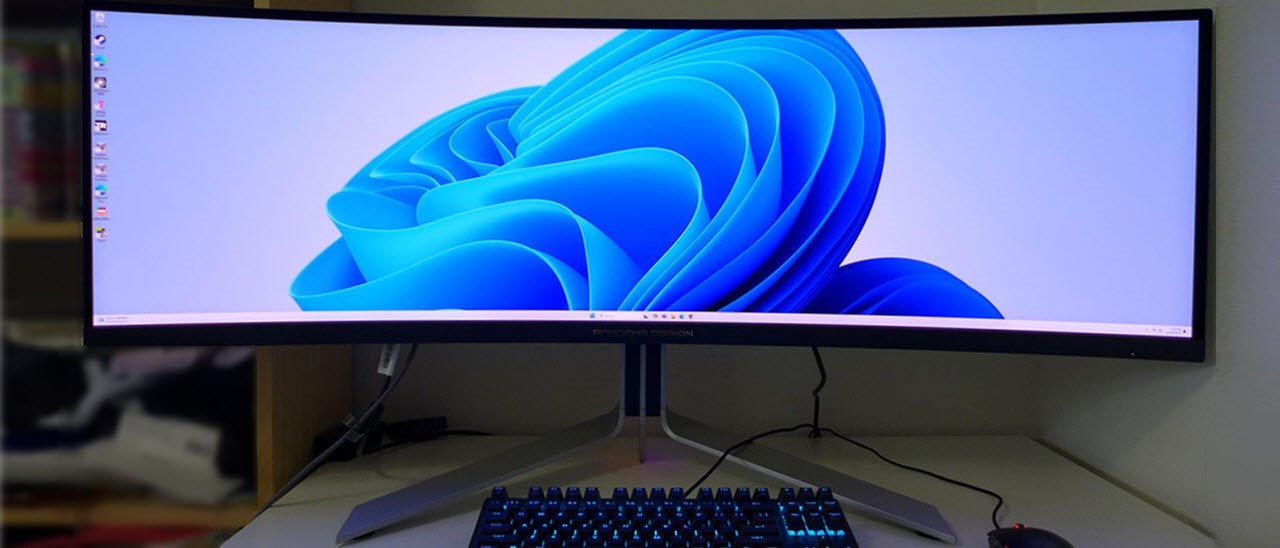Why you can trust Tom's Hardware
The PD49 can be enjoyed right out of the box without adjustment. But I found the picture a tad warm in tone when using the default Standard picture mode. You can tweak to taste or calibrate the user color temp as I did.
Grayscale and Gamma Tracking
Our grayscale and gamma tests use Calman calibration software from Portrait Displays. We describe our grayscale and gamma tests in detail here.
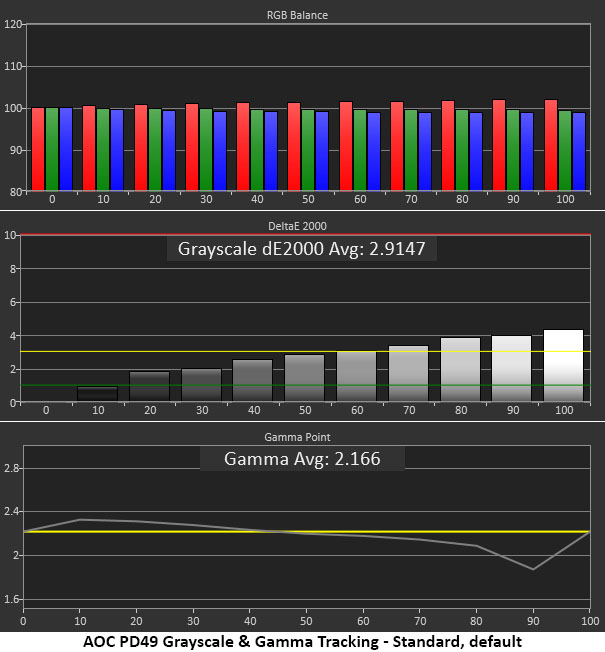
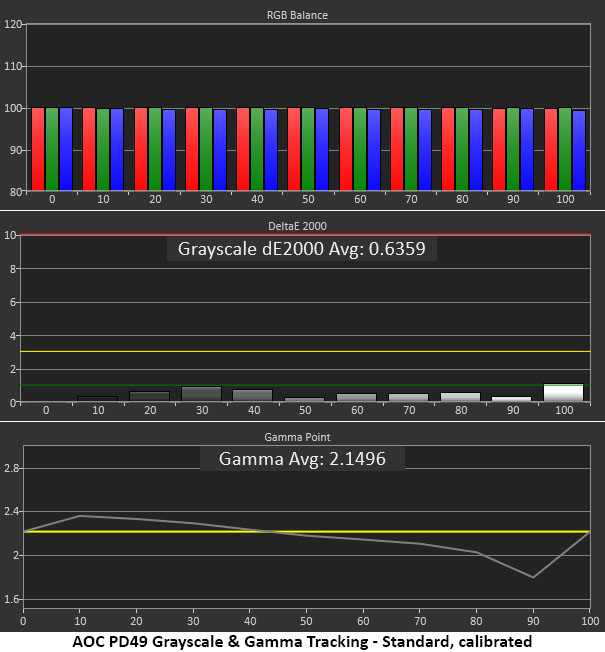
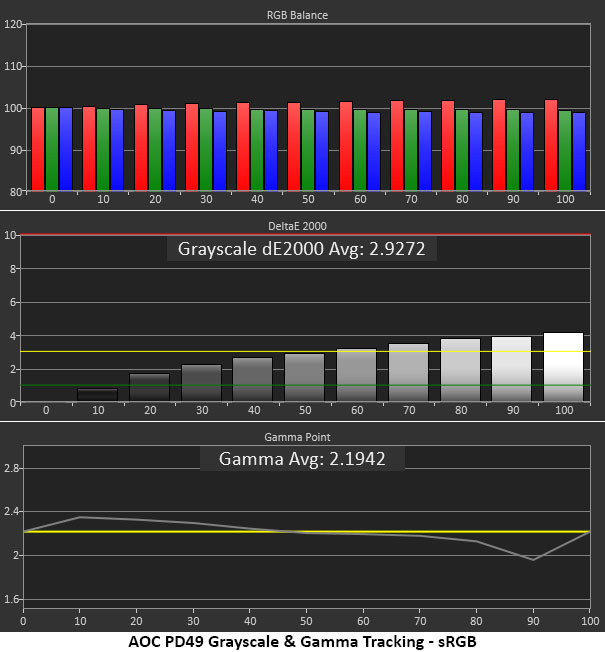
The first chart shows the PD49’s slight red errors that can be seen in areas above 70% brightness. They are small enough to be forgivable and won’t significantly impact most content. The gamma tracking chart shows a dip at 90% which means some bright bits will be too bright. In most cases, this isn’t a big deal, but some content might show a little less clarity of detail in highlight areas.
After adjusting the precise RGB controls, there is no visible grayscale error, but gamma is unchanged. The other presets are further off the mark, so I stuck with Gamma 1. This isn’t a huge issue, but I would prefer to see closer adherence to the 2.2 reference.
If you choose the sRGB gamut option, there is no visible effect on grayscale which is a good thing. The color temp options are grayed out in this mode. This chart shows that the PD49 is qualified for color grading or photo editing.
Comparisons
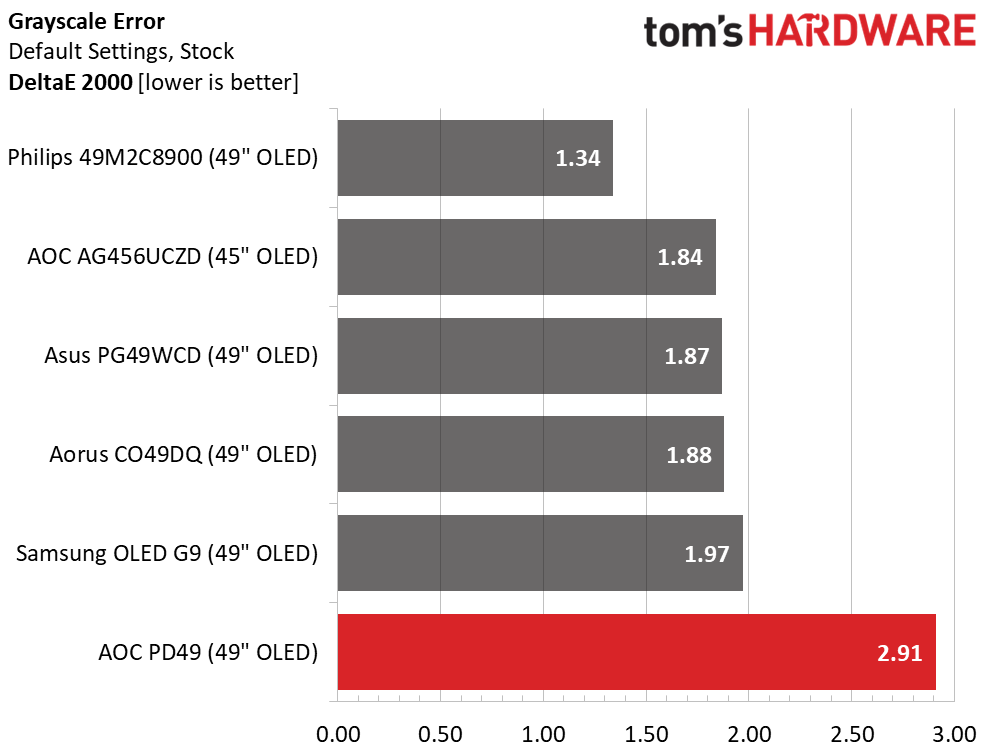
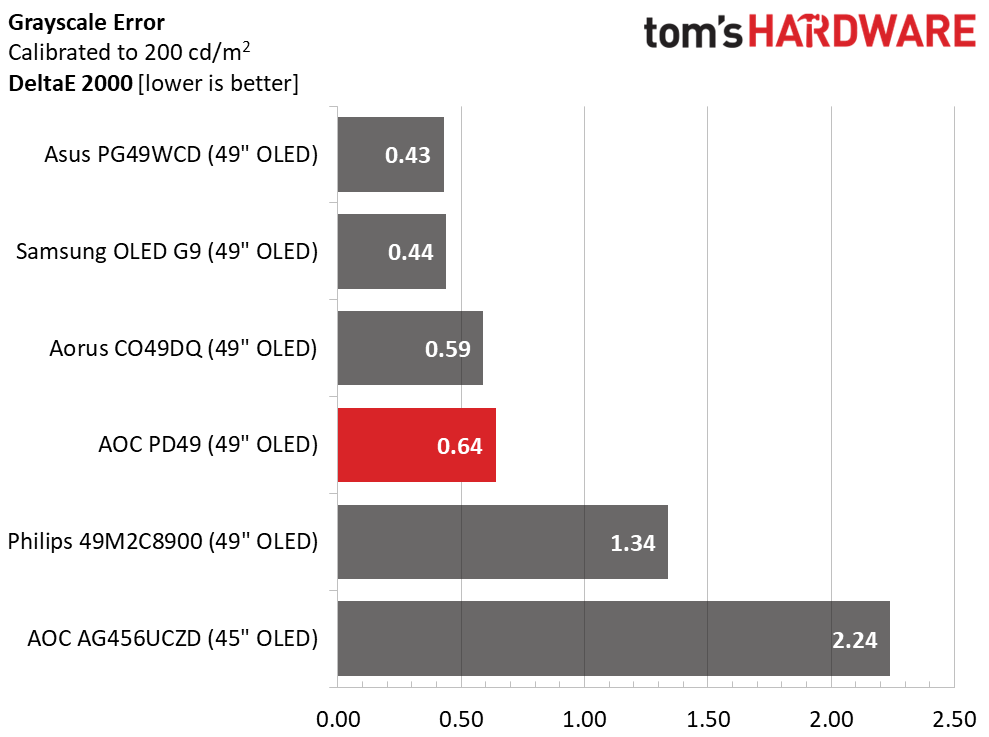
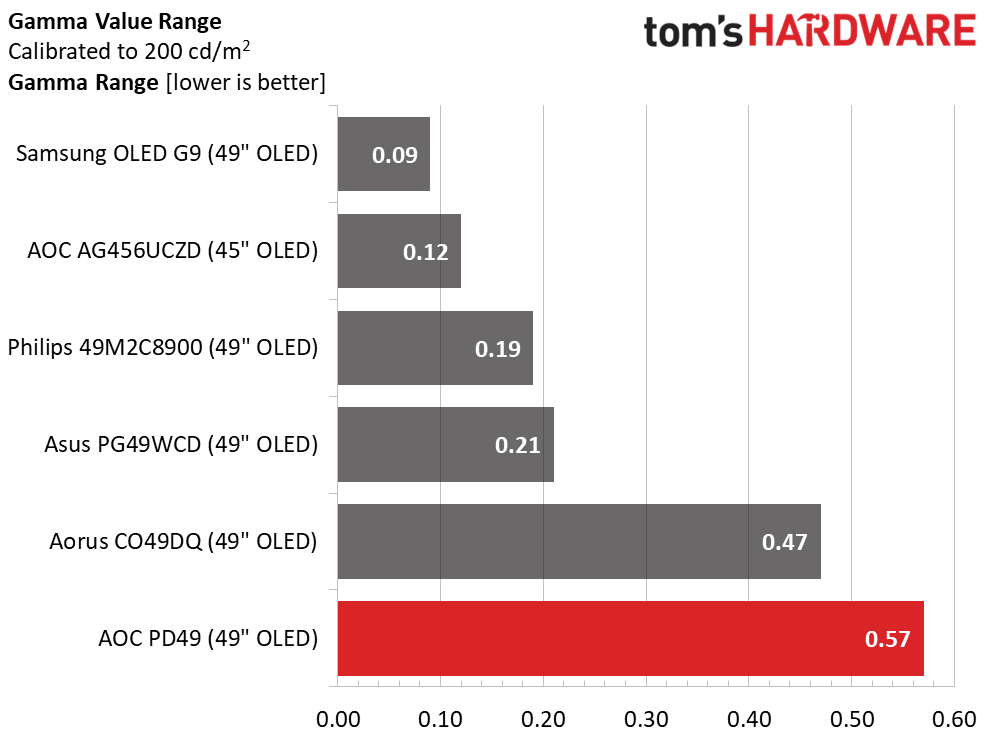
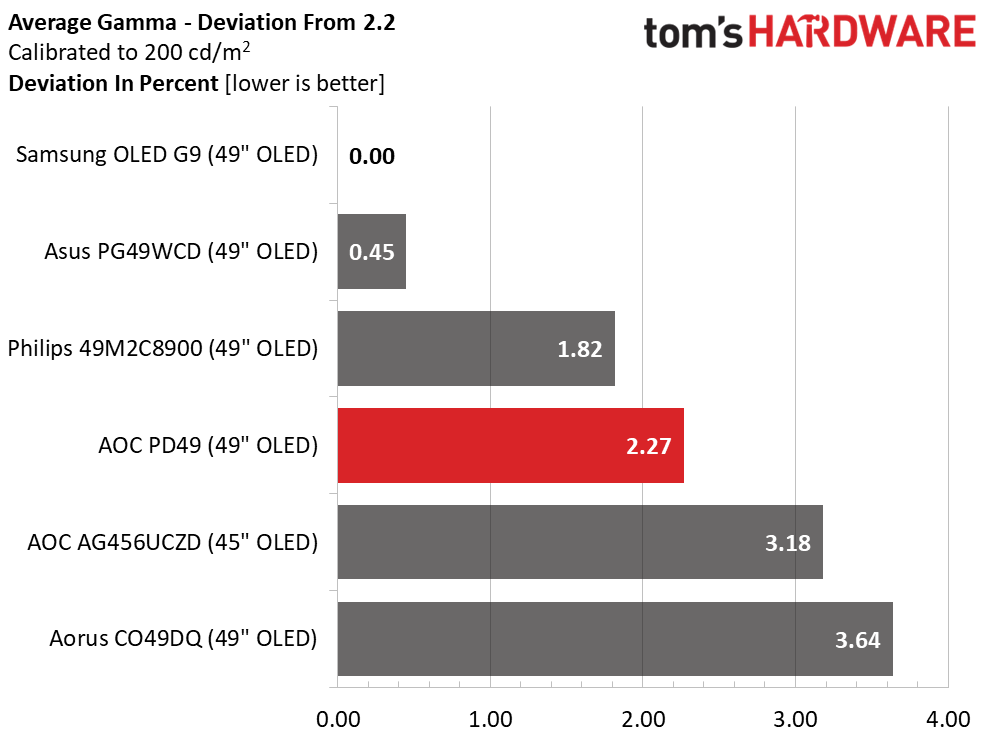
The PD49 has grayscale performance similar to that of its competition. All the screens here are good, and there are no significant issues to report. In the gamma tests, the PD49 is close to the others in average value, but its range of values is a little larger than the rest thanks to the dip at 90% brightness which cannot be adjusted away. This is a minor issue that is far from a deal-breaker.
Color Gamut Accuracy
Our color gamut and volume testing use Portrait Displays’ Calman software. For details on our color gamut testing and volume calculations, click here.
Get Tom's Hardware's best news and in-depth reviews, straight to your inbox.
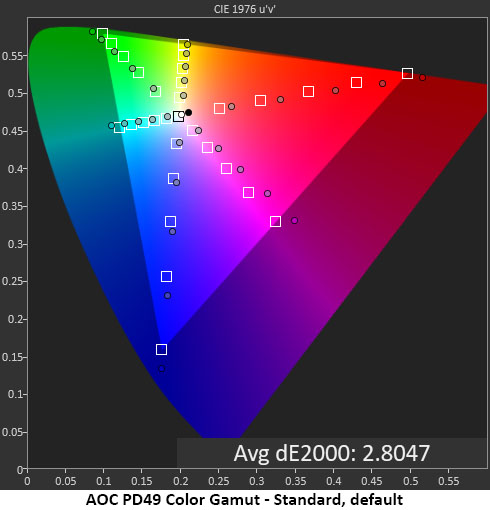
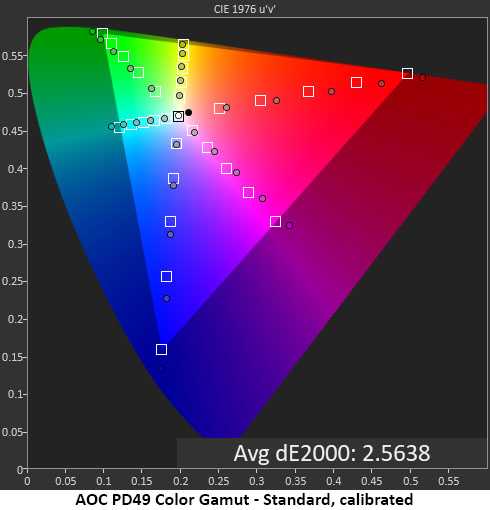
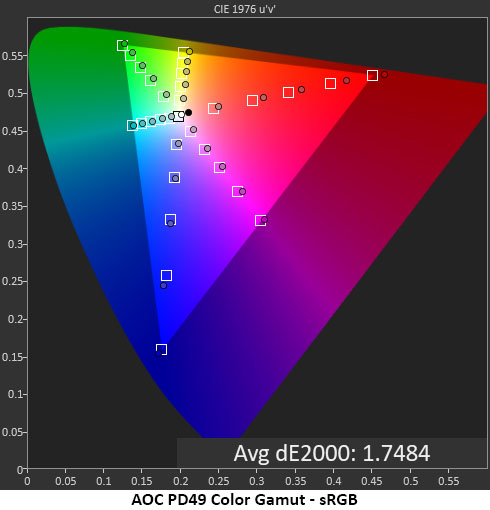
The PD49 excels in all its color gamut measurements. I checked out Panel Native and sRGB which closely match DCI-P3 and sRGB standards, respectively. The other modes also adhere to industry specs. You can have Adobe RGB if you want, which is something rarely found outside the professional realm.
The initial run shows a hue error in magenta and slight over-saturation of all colors. If you want to get closer to DCI-P3, that option is available and delivers an average error of just 1.82dE. However, a few users will complain about more color. Panel Native was my choice for gaming and general use. Calibration reduces saturation slightly and brings magenta closer to its targets.
sRGB is spot-on apart from the red primary, which is a tad over-saturated. However, with an average error of 1.75dE, it is close enough for critical applications.
Comparisons
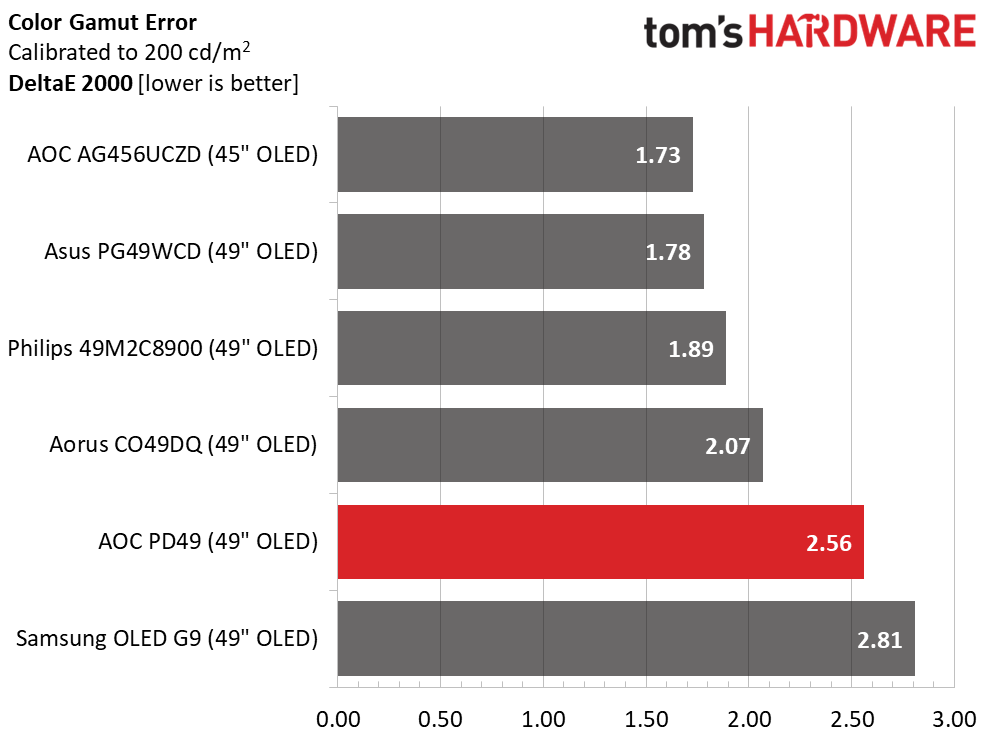
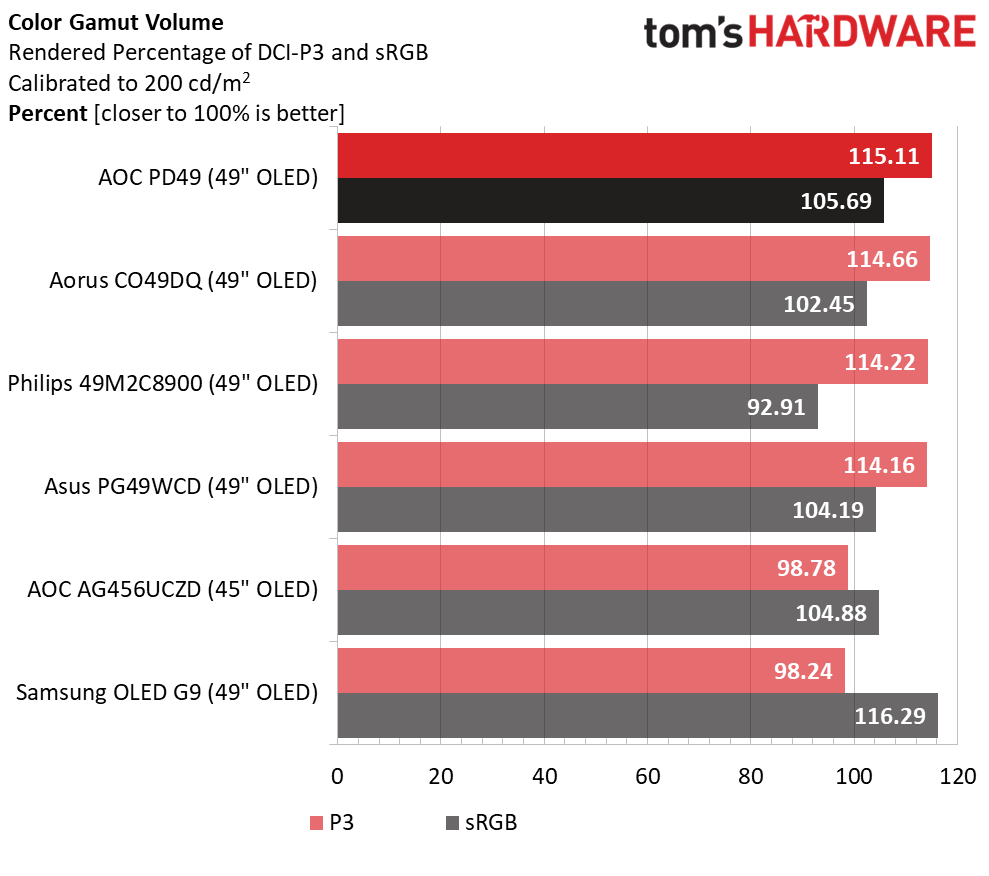
OLED monitors constitute a tough crowd when it comes to color accuracy comparisons. The PD49 finished fifth, but with a 2.29dE score, it is free of any visual errors and more than accurate enough for its intended purpose. The big win comes in the gamut volume test where it cracks the 115% mark. It is the most colorful OLED monitor I’ve tested to date. And with 105% coverage of sRGB, it is nearly ideal when that gamut is needed.
Test Takeaway: The PD49 isn’t quite perfect out of the box, but it’s close enough that calibration isn’t required. But with a few tweaks, the picture hits the reference level for grayscale and nearly so for gamut accuracy. A slight gamma anomaly keeps it from attaining perfection, but this is a minor complaint. The PD49 delivers a gorgeous image dripping with saturated color to the naked eye.
MORE: Best Gaming Monitors
MORE: How We Test PC Monitors
MORE: How to Buy a PC Monitor
Current page: Grayscale, Gamma and Color
Prev Page Brightness and Contrast Next Page HDR Performance
Christian Eberle is a Contributing Editor for Tom's Hardware US. He's a veteran reviewer of A/V equipment, specializing in monitors. Christian began his obsession with tech when he built his first PC in 1991, a 286 running DOS 3.0 at a blazing 12MHz. In 2006, he undertook training from the Imaging Science Foundation in video calibration and testing and thus started a passion for precise imaging that persists to this day. He is also a professional musician with a degree from the New England Conservatory as a classical bassoonist which he used to good effect as a performer with the West Point Army Band from 1987 to 2013. He enjoys watching movies and listening to high-end audio in his custom-built home theater and can be seen riding trails near his home on a race-ready ICE VTX recumbent trike. Christian enjoys the endless summer in Florida where he lives with his wife and Chihuahua and plays with orchestras around the state.
-
OneMoreUser I would be interest... if the vertical resolution had been 2160 or higher.Reply
Now for gaming a 32:9 1440p sure brings something, but for productivity there is no going back one you tried 2106p, only where are the screens. You can have 16:9 with 2160p, but not more than that except there is a few 5K monitors only to small and crazy expensive. -
SomeoneElse23 ReplyOneMoreUser said:I would be interest... if the vertical resolution had been 2160 or higher.
Now for gaming a 32:9 1440p sure brings something, but for productivity there is no going back one you tried 2106p, only where are the screens. You can have 16:9 with 2160p, but not more than that except there is a few 5K monitors only to small and crazy expensive.
Yeah, I agree. I was almost going to say this type of monitor would replace my Acer 32" 4K when it's time to retire it, but that 2160 high is really nice for productivity.
